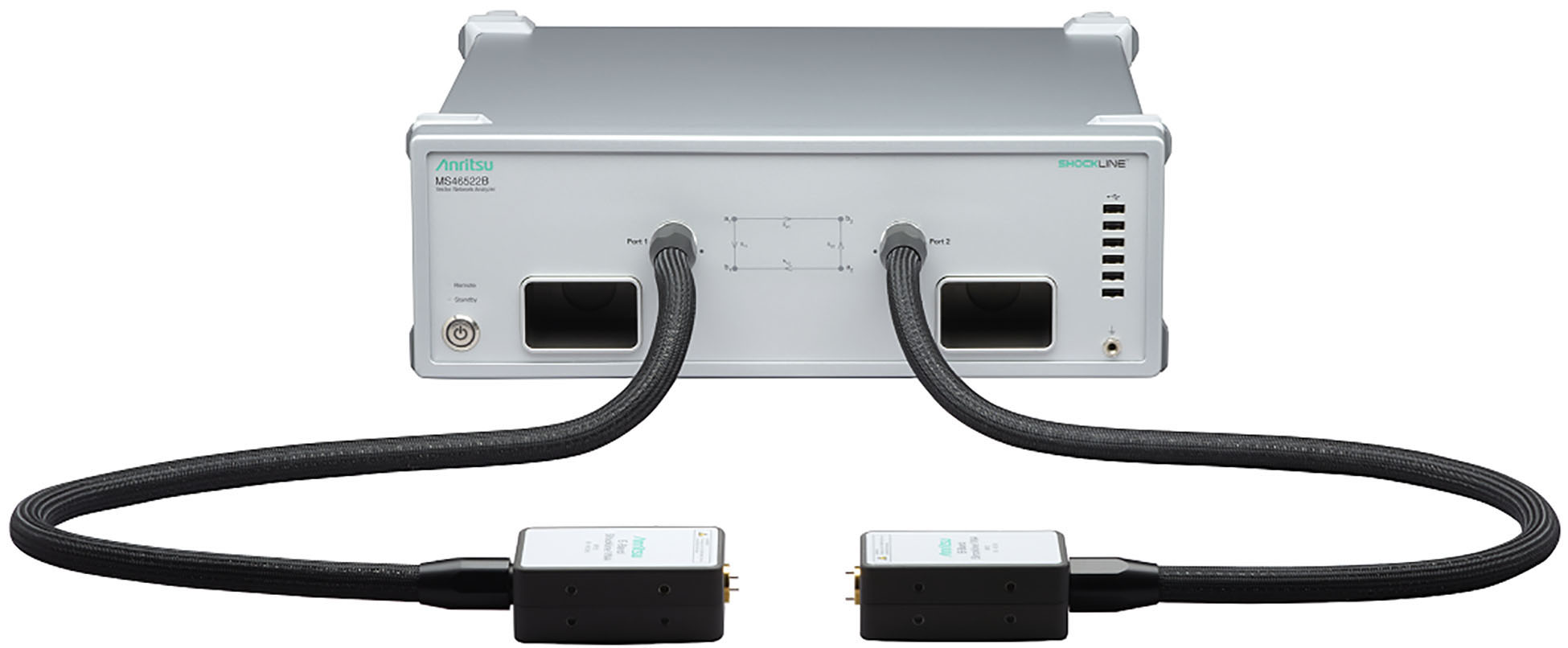Introduced by Anritsu for two of its vector network analyzer (VNA) families, the Anritsu VectorStar Eye Diagram option and ShockLine Advanced Time Domain (ATD) option provide engineers concerned about signal integrity (SI) with improved tools to conduct channel diagnostics and model validation of high-speed digital circuit designs. “As data rates continue to increase, signal channel characterization becomes increasingly challenging. As a result, VNAs are becoming more of a staple in signal integrity measurement; however, additional capabilities in processing and visualizing data are beneficial. For these reasons, more tools have been added to the VectorStar and Shockline VNA families that can help signal integrity engineers be more efficient in analyzing their designs,” said Dr. Jon Martens, Fellow at Anritsu.
The VectorStar and ShockLine VNA families provide complementary capabilities. VectorStar, Anritsu’s highest performance VNA product line, is intended for the most challenging design requirements. For instance, some designers want their test systems to be able to include up to the 5th harmonic of their system clock. VectorStar offers 2- and 4-port broadband configurations from 70 kHz to 70, 110, and 145 GHz with a single coaxial connection, supporting the latest digital data rates, including 25/28 and 43 Gbit/s. Anritsu’s ShockLine VNA family also has excellent performance, but less capability at a lower price for less demanding SI applications. This suits ShockLine VNAs for lower data rate systems or manufacturing applications.
With the VectorStar Eye Diagram option, VectorStar VNAs now provide the unique ability to display all key parameters, such as eye diagram, time domain/TDR, and S-parameters, on the same channel while continuously sweeping. Intended for use in the design of high-speed data transmission ICs to support emerging network systems, such as 5G and IoT, the VectorStar Eye Diagram option updates the VectorStar display using a trace-based process rather than a conventional file-based method. This eliminates the need to manually transfer .SnP files, unlike other VNAs in which the S-parameter performance must first be stored in a file and then recall the file to observe the eye diagram.

Anritsu VectorStar
The VectorStar Eye diagram option thus improves the efficiency of measurement, analysis, and tuning of a data transmission signal path by allowing users to see the results of circuit changes in near real-time. Engineers can observe the likelihood of bit errors — due to such effects as level compression, jitter, slew, and edge distortion — while tuning for improved performance. This is particularly valuable in identifying data stream SI issues that may occur within a given transmission path and can help conduct accurate subsystem fault location analysis.
The Advanced Time Domain (ATD) option for ShockLine MS46522B/MS46524B performance series VNAs provides tools for engineers building and validating circuit models, as well as troubleshooting SI issues. The option includes a subset of popular SI capabilities, including the ability to plot eye diagrams, determine single-ended or differential near-end crosstalk (NEXT) and far-end crosstalk (FEXT), and apply various equalization techniques.

Anritsu Shockline
With the ATD option, engineers can select among several IEEE and OIF specifications and compare the power sum of coupled noises, insertion loss, insertion-loss crosstalk ratio (ICR), insertion loss deviation (ILD), and integrated crosstalk noise (ICN). It also features a utility that converts S-parameter data into an impedance profile, a TDR with an open end, or a TDR/TDT with matched terminations.
Both the Eye Diagram and ATD options are available now.
Advertisement
Learn more about Anritsu





